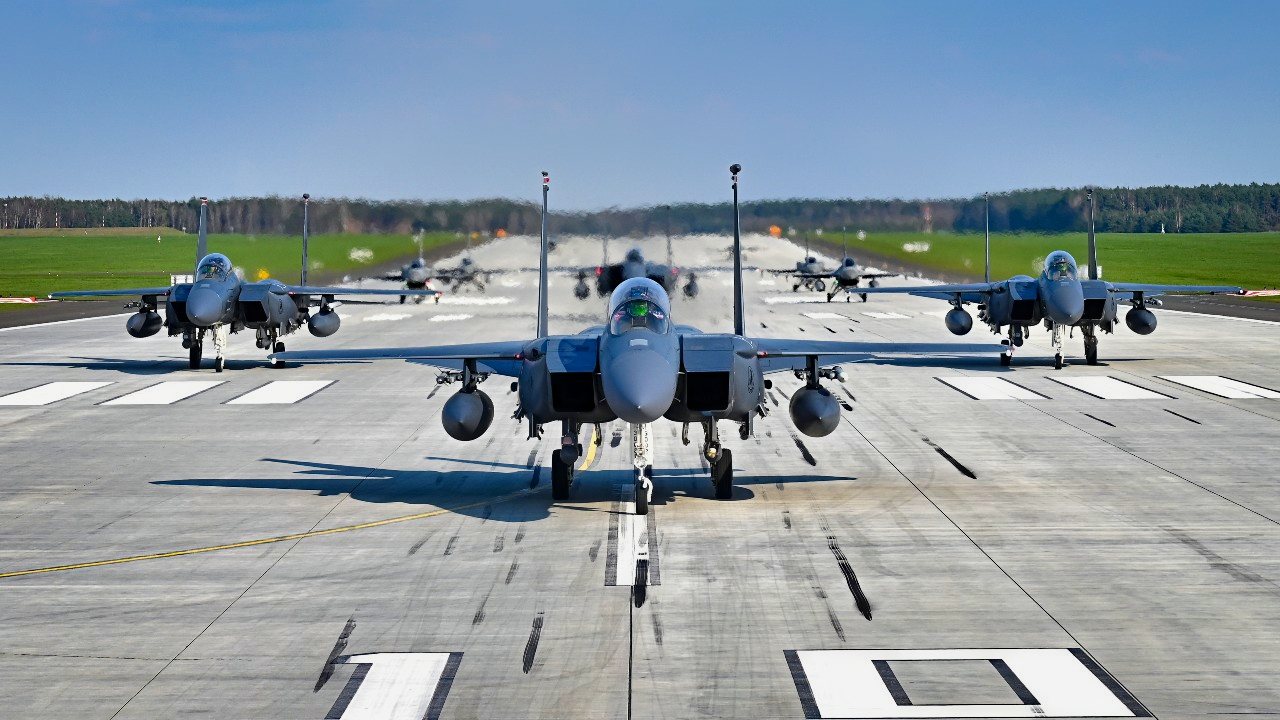
Here Is Why the F-15 Still Matters
The F-15’s long track record of air-to-air dominance can be attributed to a combination of cutting-edge avionics, superior performance characteristics, powerful weapons, and a well-trained pilot corps.
The F-15 Eagle is commonly regarded as one of the most successful air superiority fighters in the world, boasting what may be the most lopsided air combat record ever: over 100 confirmed kills against zero losses.
Developed in response to challenges faced during the Vietnam War, the F-15 first flew in 1972. It was designed to serve as an air dominance fighter, with an emphasis on speed, maneuverability, and situational awareness. The F-15’s success in air combat is primarily attributed to the aircraft’s powerful twin engines, excellent thrust-to-weight ratio, and advanced radar systems. The result is an aircraft that can dominate in beyond-visual-range (BVR) engagements while still excelling in close-range, within-visual-range (WVR) combat, also known as dogfighting.
What Makes the F-15 a Great Dogfighter?
One of the primary factors in the F-15’s air-to-air success has been the powerful AN/APG-series radar, which has been continuously upgraded over the decades to increase range, resolution, and electronic counter-countermeasures (ECCM) capabilities. The result has been a tool that enables F-15 pilots to detect and track multiple targets at long distances, even in congested and evolving environments.
The F-15 is outfitted with a slew of weapons that complement the AN/APG-series radar, including the AIM-7 Sparrow and, later, the AIM-120 AMRAAM, which enables BVR success. For short-range combat, the F-15 is equipped with both the AIM-9 Sidewinder and an internally mounted M61 Vulcan 20mm cannon. With its advanced weaponry and performance characteristics, including high acceleration, a tight turning radius, and an unrivaled climb rate, the F-15 is a lethal aircraft.
F-15 Pilots Receive Intensive Training
F-15 pilots are trained rigorously, a key to sustained air dominance. In the United States, F-15 pilots undergo intensive training, with programs such as Red Flag providing realistic, high-threat training environments. Exercises like Red Flag are designed to hone the skill of F-15 (and other airframe) pilots, in preparation for real-world combat. The preparation has proven to be a worthwhile investment.
During Operation Desert Storm, the F-15 tallied 36 of the US’s 39 air-to-air victories, including kills against MiG-29s, MiG-25s, and Mirage F1s. The United States also utilized its F-15 fleet, to significant effect, in conflicts throughout the Middle East in the 2000s and 2010s.
However, the United States is not the only operator of the F-15. Notably, the Israeli Air Force has used the F-15 to significant effect since the late 1970s. Indeed, the Israelis are responsible for the majority of the F-15’s air-to-air kills. During the Lebanon War in 1982, Israeli F-15s scored multiple kills against Syrian MiGs, all without suffering a single loss. Saudi Arabia and Japan also operate the F-15, with the former claiming to have scored F-15 kills during the Gulf War era.
The F-15’s long track record of air-to-air dominance can be attributed to a combination of cutting-edge avionics, superior performance characteristics, powerful weapons, and a well-trained pilot corps. The adaptability of the platform, which enables it to evolve through upgrades, has ensured the F-15’s enduring relevance, even as external threats shift from one decade to the next. With five decades of service and no retirement in sight, the F-15 has established itself as a legendary air-to-air platform.
About the Author: Harrison Kass
Harrison Kass is a Senior Defense and National Security Writer at The National Interest. Kass is an attorney and former political candidate who joined the US Air Force as a pilot trainee before being medically discharged. He focuses on military strategy, aerospace, and global security affairs. He holds a JD from the University of Oregon and a master’s in Global Journalism and International Relations from NYU.
Image Credit: Wikimedia Commons/Senior Airman Madeline Herzog.
The post Here Is Why the F-15 Still Matters appeared first on The National Interest.















